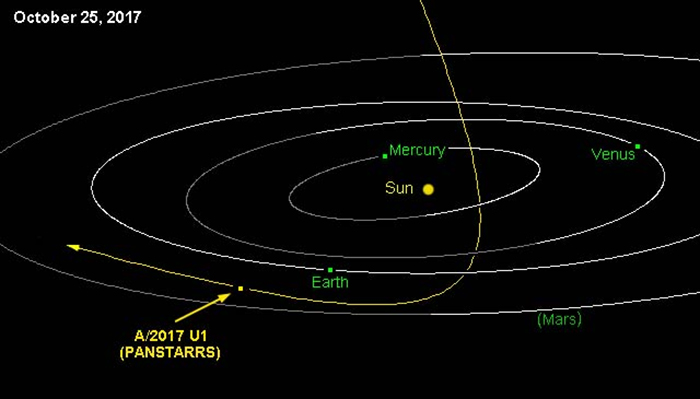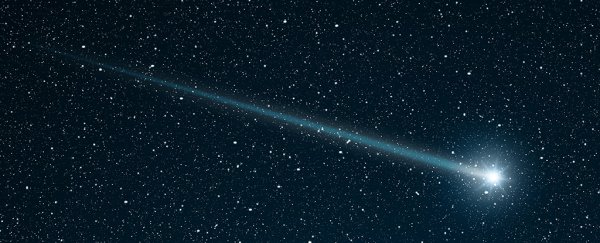Up until now, all asteroids and comets we've seen have originated in our own Solar System.
But a few days ago astronomers spotted our first visitor from outer space.
Preliminary observations suggested it to be a comet with a velocity that indicated it was flung out from a nearby star rather than getting caught in the Sun's gravitational pull, as comets from our Solar System would be.
Then things got more confusing.
The initial readings were taken on 18 October from the Pan-STARRS 1 telescope in Hawaii by the International Astronomical Union's Minor Planet Center (MPC). Judging by its orbit, astronomers hypothesised it could be a comet unlike any we've seen before.
"If further observations confirm the unusual nature of this orbit, this object may be the first clear case of an interstellar comet," reported the associate director of the MPC, Gareth Williams.
The object has what's called a hyperbolic orbit, which means it's going fast enough to avoid getting drawn in by the Sun.
Assuming it to be a comet, astronomers designated it C/2017 U1, but on 25 October new imaging from the Very Large Telescope in Chile revealed no comet characteristics.
The object is now called A/2017 U1 to reflect that (A stands for "asteroid"), and it's the first time a potential comet has been bumped to the designation of an asteroid. But it's still extremely interesting.
 Credit: NASA / JPL / Horizons
Credit: NASA / JPL / Horizons
Having passed within around 37.6 million kilometres (23.4 million miles) of our Sun on the 9th of September, the object should've been burned up by the Sun – but it seems to have been travelling too fast for that.
When it first showed up, measurements suggested the object was travelling about 26 kilometres (16.2 miles) per second.
Aas you can imagine, this mysterious asteroid is pretty exciting for stargazers, and the race is now on to learn more about A/2017 U1 before it leaves our Solar System for good. It passed closest to Earth on 14 October, about 24 million kilometres (15 million miles) away.
Experts estimate the object is about 160 metres (525 feet) across, reports Kelly Beatty at Sky & Telescope, but there's still a lot we don't know for sure about A/2017 U1, starting with - where did it come from?
Both its extreme hyperbolic eccentricity of 1.19, which is essentially its path through the Solar System, and its very high inclination of 122° compared with Earth's orbit around the Sun, are making astronomers think this is a visitor.
In other words, if you think of the orbits of the planets in our Solar System arranged in a disc shape, A/2017 U1 has raced in from almost directly overhead, and is now flying out of sight again.
And, according to Fraser Cain at Universe Today, there's a heated debate happening in the Minor Planet Mailing List as to the potential origins of the object, with some suggesting it could be coming from Vega.
A number of comets have been identified as possibly being extrasolar in origin, such as 96P/Machholz, but no objects have ever been confirmed as originating from outside the Solar System.
As Gareth Williams noted in the MPC report, "further observations of this object are very much desired."
